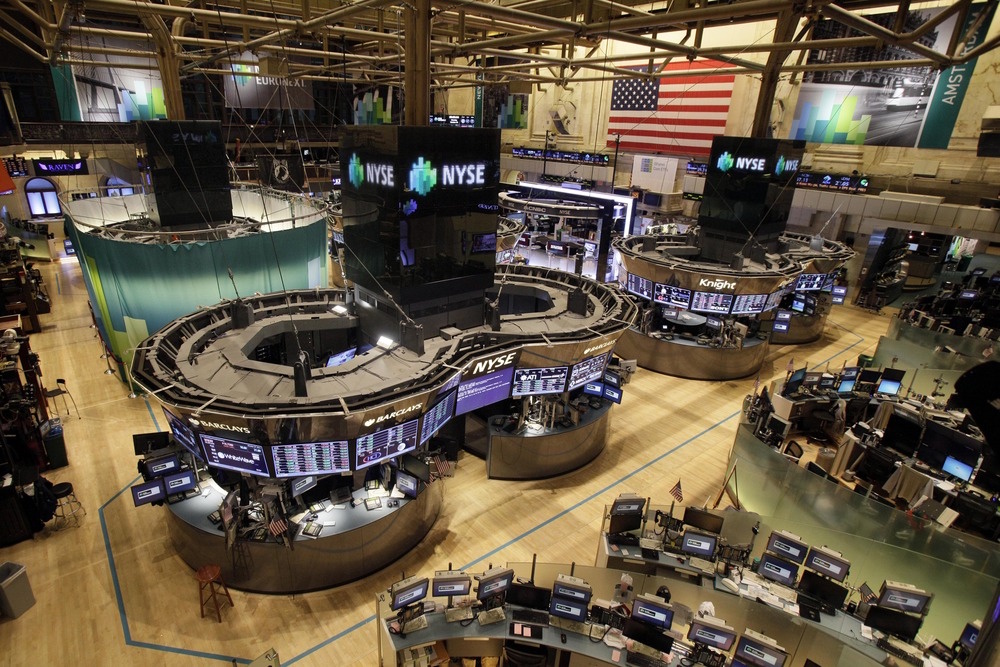
US equities experienced a significant decline, as investors opted to divest from technology companies, leading to increased volatility. The Dow experienced a decline of 798 points, representing a decrease of 1.65%. The broader S&P 500 experienced a decline of 1.66%, while the tech-heavy Nasdaq Composite saw a decrease of 2.29%. Investors evaluated the timeline for the resumption of economic data releases following the conclusion of the government shutdown. On Wednesday evening, the House approved a funding measure that had previously been passed by the Senate, and the bill received President Donald Trump’s signature in the late evening, marking the conclusion of the longest government shutdown in US history. Currently, attention on Wall Street is directed towards the accumulation of government data that was postponed due to the shutdown — and the potential implications this may have for the Federal Reserve’s economic outlook. “In the absence of new economic indicators, market sentiment has shown a marked increase in volatility in recent weeks,” Seema Shah stated in a note. “With the conclusion of the government shutdown, every anticipated data release or policy announcement is poised to significantly influence market dynamics.”
The Dow, S&P, and Nasdaq experienced their most significant decline since October 10, a day marked by heightened US-China trade tensions that adversely affected stock performance. Fear and Greed index transitioned from a state of “fear” to one of “extreme fear,” and the VIX, often referred to as market’s fear gauge, experienced an 18% increase as market volatility intensified. “The gears of the government should be working again soon, and while that is a relief for markets and the economy, there is still plenty of uncertainty, particularly around the missed inflation and jobs data and how these fronts have been faring,” stated Carol Schleif. On Thursday, market participants were estimating approximately a 52% probability that the Federal Reserve would implement a rate cut in December, as indicated by CME FedWatch, with the probability decreasing from 63% on Wednesday and 96% a month prior. “The data blackout has complicated the Federal Reserve’s task, yet we maintain our expectation for another interest rate cut in December,” Schleif stated. “We anticipate that markets will trend upward — albeit with persistent fluctuations.”
The decline in equities intensified during the afternoon session, and the conclusion of the third-quarter earnings season indicates a reduction in fundamental catalysts, rendering markets increasingly vulnerable to fluctuations driven by investor sentiment. In recent weeks, tech stocks have faced downward pressure as investors express apprehensions regarding their relatively high valuations, and there is increasing skepticism regarding the capacity of AI companies to generate sufficient profits to warrant the substantial expenditures currently being undertaken. Tesla shares experienced a decline of 6.6%, Palantir shares declined by 6.5%, while Nvidia shares experienced a decrease of 3.6%, and Oracle shares declined by 4.15%. “Investors are reevaluating the prices they’re paying for big tech and AI stocks,” stated Ross Mayfield. Following a robust rally in the technology sector over the past few months, investors are now capitalizing on gains and reallocating their capital into sectors that have underperformed and appear comparatively undervalued. The Nasdaq has experienced a decline of nearly 5% following its record high close on October 29, and the technology-focused index has experienced a decline of nearly $2 trillion in market capitalization during that timeframe.
Sameer Samana indicated that he has recently reduced his exposure to the technology sector, stating, “It experienced such a significant surge that it was prudent to realize the gains and seek alternative opportunities,” while the Dow’s decline on Thursday follows consecutive days of achieving record highs, and the blue-chip index achieved a historic milestone by closing above 48,000 points on Wednesday, driven by investor interest in sectors such as financials and health care. Walt Disney shares fell 7.8% on Thursday following the release of earnings that failed to meet expectations. In other developments, bitcoin experienced a decline of approximately 3.3% on Thursday, with trading occurring at around $98,250, and the cryptocurrency has faced challenges in recovering its position following a significant decline in recent weeks, having reached an unprecedented peak exceeding $126,000 in early October. Investors are attempting to interpret the Federal Reserve’s perspective on the economy in anticipation of the central bank’s policy meeting scheduled for December, and the Federal Reserve’s rate reductions in September and October contributed to a favorable environment for equities, while investor sentiment may be adversely affected if central bankers maintain current interest rates in December, given the lagging data and an uncertain economic outlook. “If sticky inflation compels the Fed to uphold a restrictive policy, the cost of capital continues to pose a challenge for valuations,” David Miller, CIO at Catalyst Funds, stated in an email.

